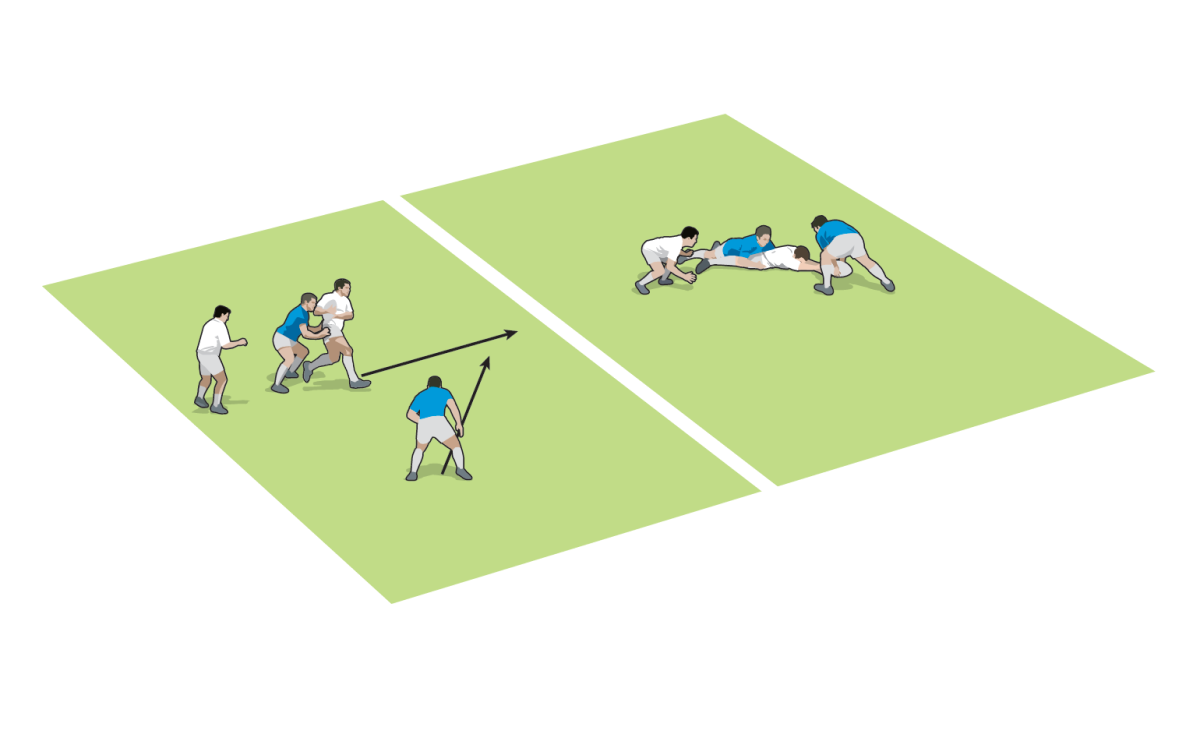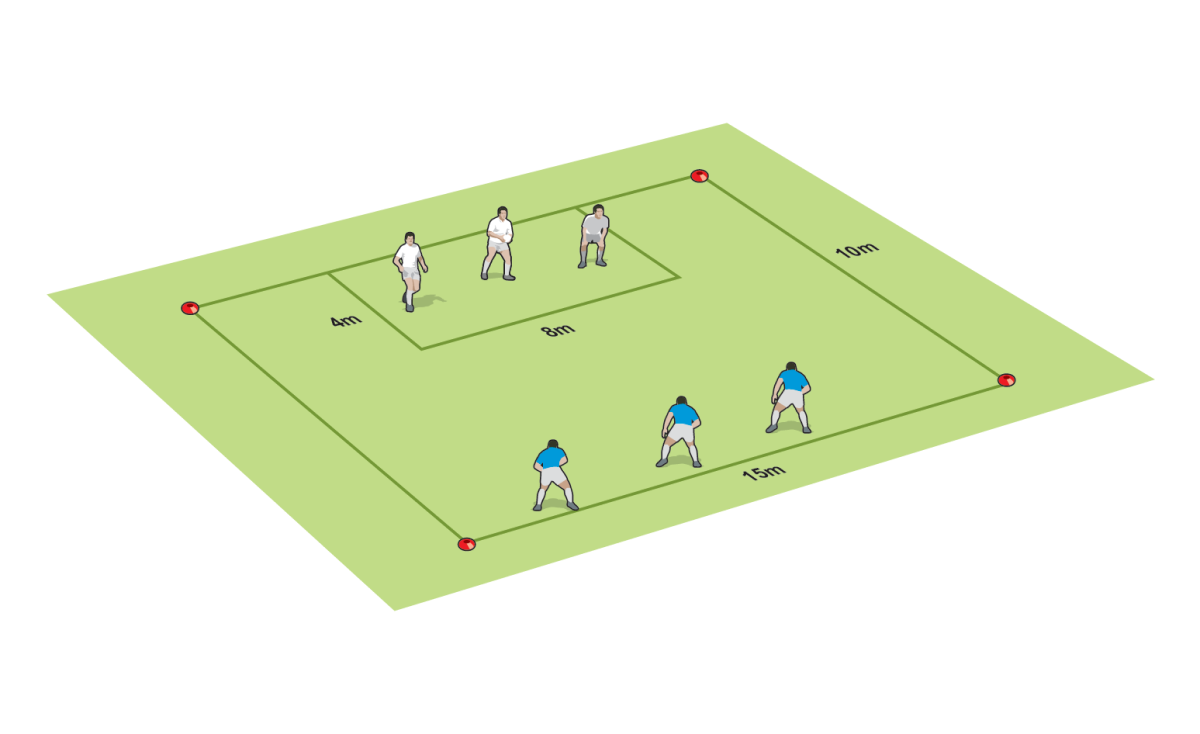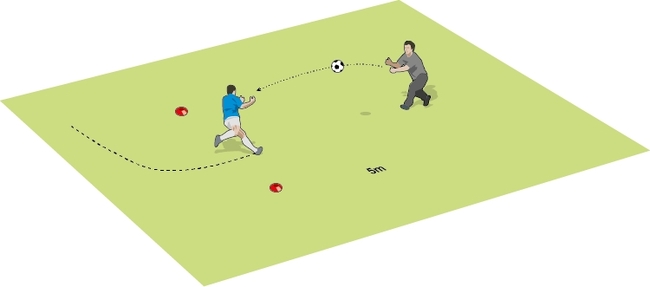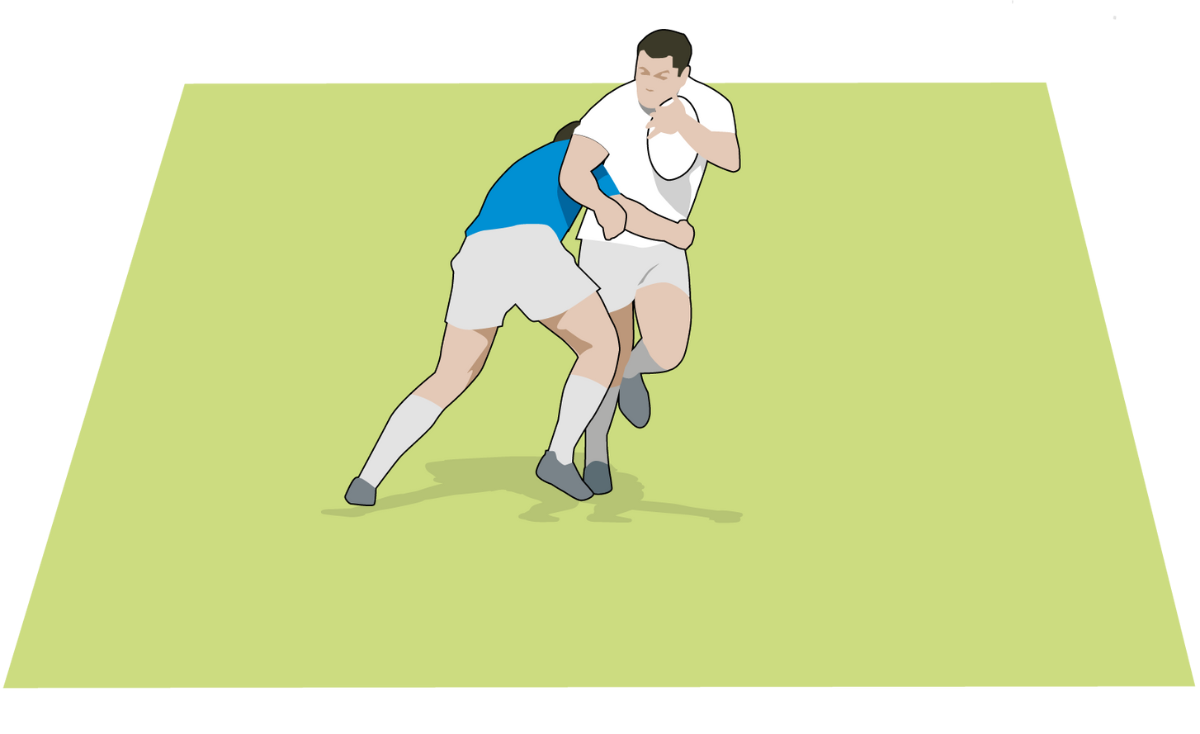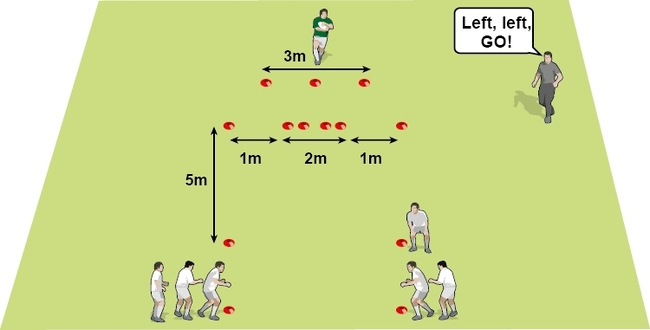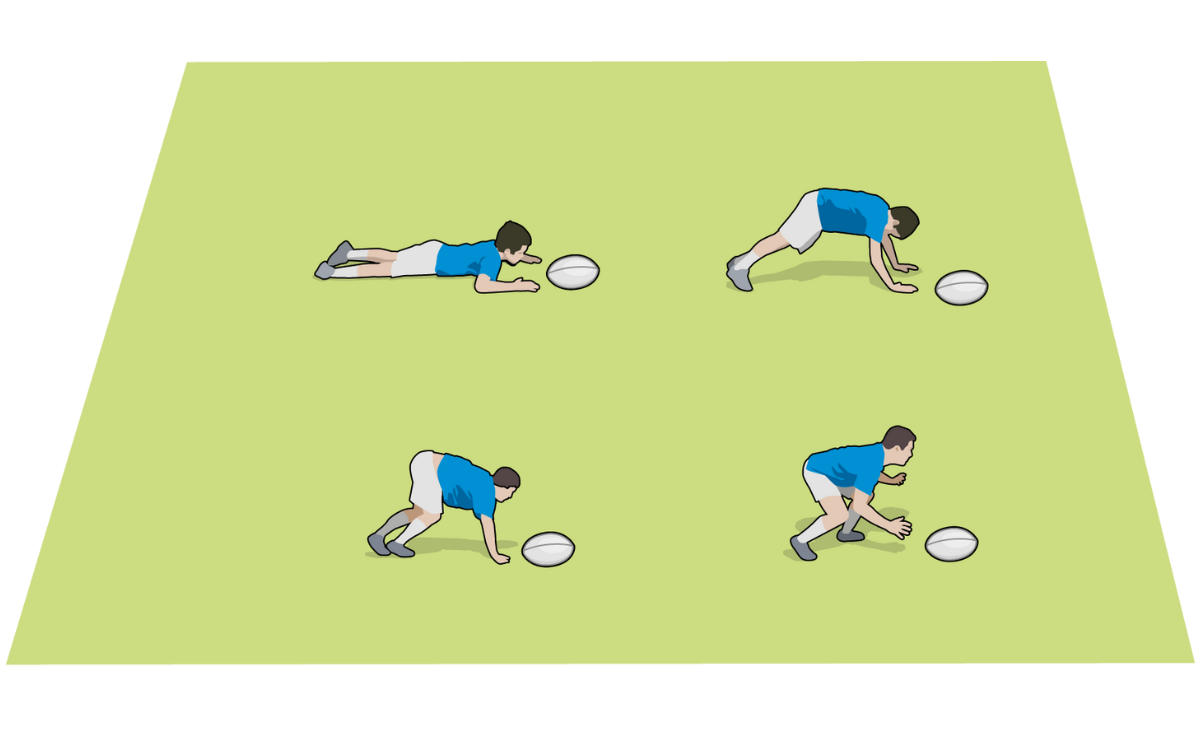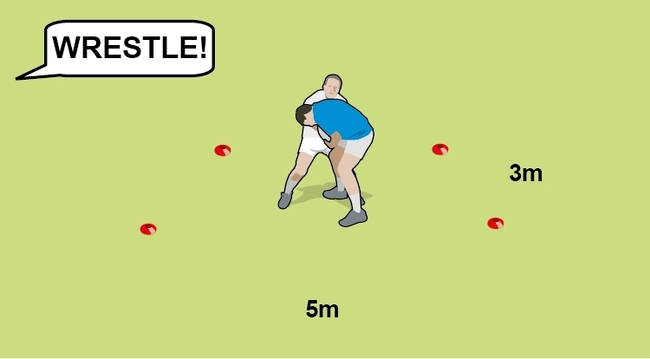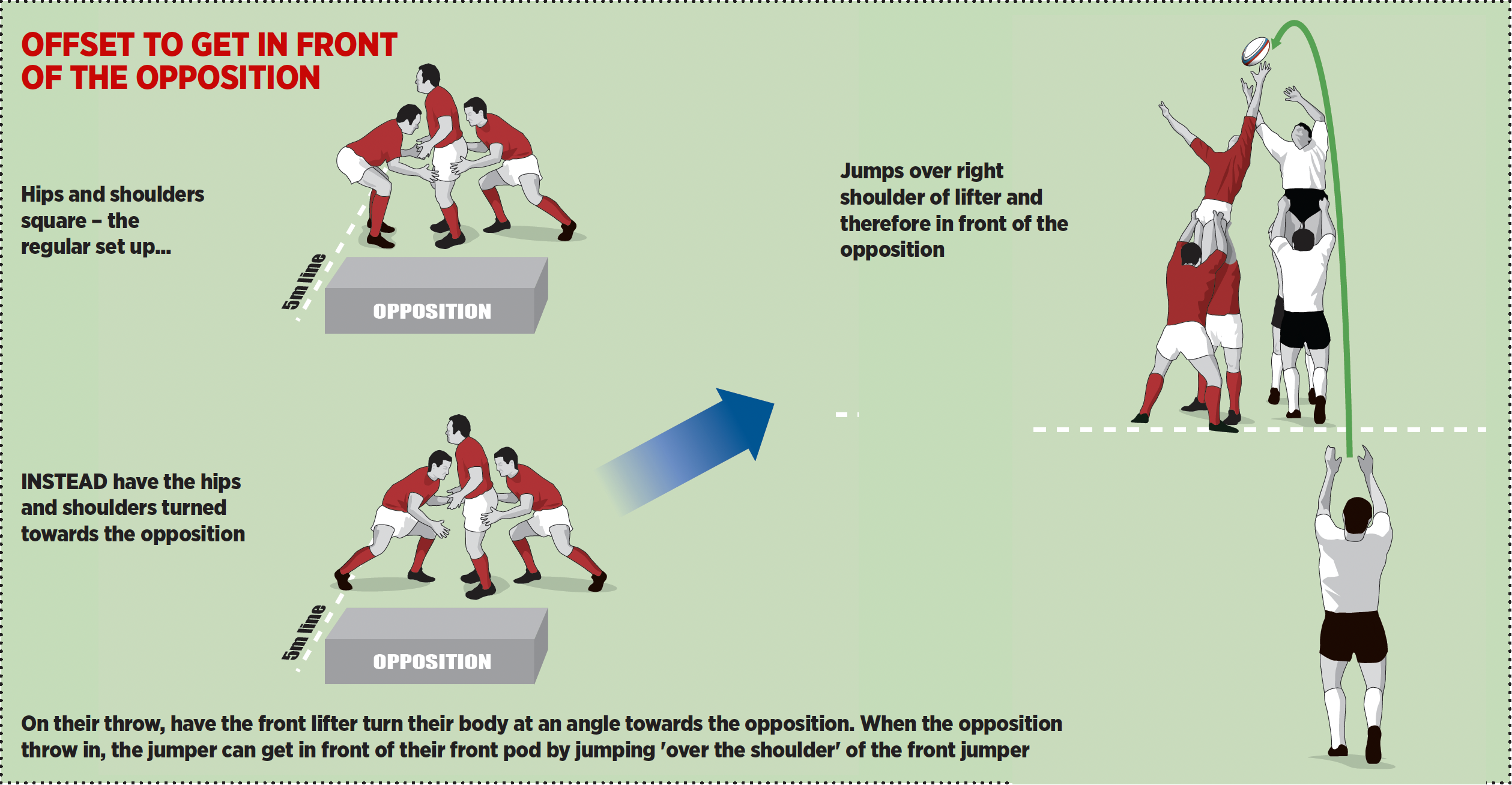Easy defence
Build tackling confidence and technique with low impacts; then focus on completing, so the tackler can get back into the game.
WHY USE IT
Low-impact tackling still requires good skills to bring the ball carrier to the ground.
set up
One ball per group of four and a 15m wide, 10m long box for the game.
HOW TO PLAY
ACTIVITY: An attacker, with a ball, is being held by the shorts by a defender. A tackler starts about 2m to the side of this pair. The attacker drives forward while being held. When they are then released by the defender, the other player makes a side-on tackle.
DEVELOPMENT: Add an attacker, about 3m behind the attacker who is being held. When the attacker is released by the defender, all the players are involved in trying to win the ball back. Let play develop into a contest over the ball until there is a clear victor, or an infringement. Swap attackers and defenders and repeat.
GAME SITUATION: Three attackers start in a small box at one end of the main box, with three defenders on their try line. Ask the defenders to walk forward and then release the attackers. Play normal rugby, without kicking, until a try is scored, an infringement occurs or the attack loses the ball. Award a point for a try and a point if the defence steals the ball. Swap defence and attack.
COACHING POINTS
- Target shorts, get close with feet, hard in with shoulder, tight grip and drive with feet.
- Recover and challenge for the ball.
- One player holds the ball carrier, who aims to move forward
- When the ball carrier is released, the tackler goes across to make a side-on tackle
Related Files
-
Add another attacker about 3m behind
- After the tackle, both sides compete for the ball
-
Start three attackers in the box. Release them at any stage
- The defenders walk forward, running and tackling the attack once they are released
- Score a point for a try or a point for a turnover
Newsletter Sign Up
Coaches Testimonials

Gerald Kearney, Downtown Las Vegas Soccer Club

Paul Butler, Florida, USA

Rick Shields, Springboro, USA

Tony Green, Pierrefonds Titans, Quebec, Canada
Subscribe Today
Be a more effective, more successful rugby coach
In a recent survey 89% of subscribers said Rugby Coach Weekly makes them more confident, 91% said Rugby Coach Weekly makes them a more effective coach and 93% said Rugby Coach Weekly makes them more inspired.
Get Weekly Inspiration
All the latest techniques and approaches
Rugby Coach Weekly offers proven and easy to use rugby drills, coaching sessions, practice plans, small-sided games, warm-ups, training tips and advice.
We've been at the cutting edge of rugby coaching since we launched in 2005, creating resources for the grassroots youth coach, following best practice from around the world and insights from the professional game.


